Navratras Beyond Observances: Cosmic Significance and Lessons from Goddess Durga
Unveiling the Sacred Narrative: The Nine Holy Days of Navratras and the Story Behind the Multifaceted Manifestations of Goddess Durga.
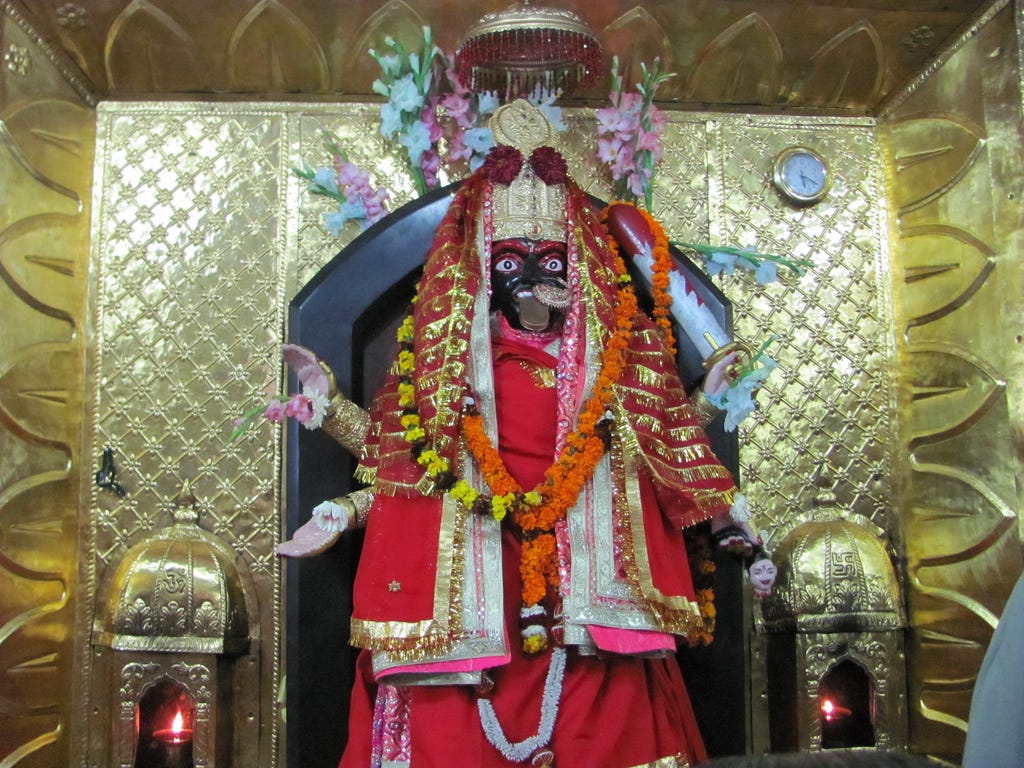
The Spiritual Significance of Ashwin Navratras
The festival of Navratras stands as a pivotal event in the Hindu calendar, with its most celebrated occurrence taking place during the autumn month of Ashwin. The word 'Navratras' means 'nine nights,' and these auspicious days are dedicated to the worship of the nine unique manifestations of Goddess Durga (दुर्गा). Although another version of Navratras—commonly referred to as 'Gupt Navratras'—exists during the Chaitra month in spring, it is the Ashwin Navratras that engross the collective spiritual consciousness, symbolising the ultimate victory of good over evil.
The Celestial Timing: Ashwin Navratras 2023
This year, the eagerly awaited Ashwin Navratras unfold from the 3rd to the 11th of October, culminating with the grand festivity of Dussehra on the 12th. This significant festival aligns closely with the lunar calendar, beginning on the first day of the bright half of the moon, known as the Shukla Paksha (शुक्ल पक्ष), in the month of Ashwin. The celebrations conclude on the tenth day, which is celebrated as Vijayadashami or Dussehra. Far more than mere dates on a calendar, these nine sacred nights and their grand finale serve as celestial phases that heighten the spiritual energies dedicated to the nine divine manifestations of Goddess Durga (दुर्गा).
The Story Behind Navratras
According to ancient Hindu belief, the demon king Mahishasura gained the boon of invincibility from Lord Brahma. Empowered, he began to wreak havoc on earth and the heavens. Unable to tolerate his tyranny, the gods pooled their divine energies to create Goddess Durga. The nine days symbolise the nine forms of Durga, each representing a distinct power and characteristic, deployed to vanquish Mahishasura.
The Nine Avatars of Durga
The nine forms of Durga worshipped during the Navratras are as follows:
Shailputri (शैलपुत्री)
Brahmacharini (ब्रह्मचारिणी)
Chandraghanta (चंद्रघंटा)
Kushmanda (कूष्माण्डा)
Skandamata (स्कंदमाता)
Katyayani (कात्यायनी)
Kaalratri (कालरात्रि)
Mahagauri (महागौरी)
Siddhidatri (सिद्धिदात्री)
Each of the nine forms of Goddess Durga worshipped during the Navratras carries a distinct significance, embodying various aspects of the Divine Feminine. We elucidate and elaborate further:
Shailputri (शैलपुत्री)
Significance: Shailputri, literally meaning the 'Daughter of the Mountain', is considered to be the direct incarnation of Mother Earth. She symbolises the foundation of devotion and is often depicted riding a bull, holding a trident.
Brahmacharini (ब्रह्मचारिणी)
Significance: Brahmacharini signifies penance and austerity. She embodies the quest for knowledge and wisdom. This form of Durga is said to grant peace and prosperity and is considered to be the epitome of grace.
Chandraghanta (चंद्रघंटा)
Significance: This form of Durga has a half-moon shaped like a bell on her forehead, which is why she's named Chandraghanta. She symbolises bravery and courage and is believed to help her devotees overcome difficulties.
Kushmanda (कूष्माण्डा)
Significance: Kushmanda is associated with cosmic energy. It is believed that she created the universe with her divine smile. She represents the form of Durga where she starts living within the Sun for liberating energy to the universe.
Skandamata (स्कंदमाता)
Significance: Skandamata, the mother of Skanda (or Kartikeya), symbolises the strength of a mother. Worshipping her is believed to lead to the development of better relationships and family life.
Katyayani (कात्यायनी)
Significance: Katyayani was born to Sage Katyayan and represents the warrior form of Durga. She is considered to be a fierce form who can annihilate demons yet bestows immense blessings upon her devotees.
Kaalratri (कालरात्रि)
Significance: This is the fiercest and the most ferocious form of Goddess Durga. Kaalratri is believed to destroy ignorance and endow her devotees with freedom from darkness. Despite her fearsome appearance, she is benevolent towards her devotees.
Mahagauri (महागौरी)
Significance: Mahagauri symbolises purity and austerity. She epitomises beauty and grace and is often dressed in white. She is believed to wash away all sins and bestow a sense of calm and peace upon her devotees.
Siddhidatri (सिद्धिदात्री)
Significance: Siddhidatri is the giver of supernatural powers and is worshipped on the ninth day. She is known to have granted powers (siddhis) to Lord Shiva as well and represents the plethora of achievements that one can acquire through devotion.
These forms collectively present a holistic embodiment of the feminine divine, each with a specific lesson for the devotees.
The Battle and the Slaying of Mahishasura
The slaying of Mahishasura by Goddess Durga is a pivotal narrative in Hindu mythology, often recounted during the Navratras. It serves as an allegory for the triumph of good over evil, justice over injustice, and virtue over immorality. According to Hindu beliefs, the battle between Goddess Durga and Mahishasura raged for nine nights and nine days. It was on the tenth day, known as Vijayadashami or Dussehra, that Goddess Durga managed to defeat and kill Mahishasura. This day is considered auspicious and is celebrated with grandeur to mark the victory of good over evil.
The Unique Vulnerability of Mahishasura
Mahishasura had performed rigorous penance and had received a boon from Lord Brahma that he could not be killed by any man or god. His boon did not cover the possibility of his being slain by a woman, reflecting perhaps an underestimation of feminine power. Goddess Durga, embodying the collective energies of various gods, was created to exploit this loophole. In this sense, yes, Mahishasura could only be killed by a female deity.
The Sucking of Blood
Different versions of the story present varying details, but one common interpretation is that Goddess Durga had to suck Mahishasura's blood to prevent him from reproducing himself from his own blood. In some renditions of the popular narratives, every drop of Mahishasura's blood that touched the ground would give rise to another demon. By sucking his blood, Goddess Durga prevented any such occurrence, ensuring that the demon was entirely vanquished.
Symbolic Interpretation
The act of Goddess Durga sucking Mahishasura's blood is often seen symbolically as draining the very life force that fuelled his tyranny, ensuring not just his defeat but also the elimination of the evil he personified. The story of Mahishasura's defeat is not merely a tale of victory but serves as a message of hope, justice, and the indomitable strength of righteousness. It showcases the power of the feminine divine, making it a key story during the festival of Navratri.
Shubho Mahalaya: The Dawn of Devotional Fervour in Bengal
In the cultural and spiritual tapestry of Bengal, "Shubho Mahalaya" stands as a significant milestone that heralds the onset of Navratras and the eagerly awaited Durga Puja. This special day marks the termination of Pitri Paksha, a period of mourning and ancestral remembrance, and the commencement of the auspicious Devi Paksha, dedicated to Goddess Durga. On this day, which fell yesterday (on 14th October this year), it is widely believed that Goddess Durga starts her journey from Mount Kailash to her earthly abode, initiating the season of devotion and celebration. The essence of 'Shubho Mahalaya' extends beyond mere rituals; it encapsulates the collective spirit of Bengalis, imbuing the atmosphere with a 'pujo-pujo' feel. Traditionally, households wake up before dawn to listen to the 'Mahishasura Mardini' broadcast, a collection of songs and mantras evoking the goddess, encapsulating the essence of this spiritually charged day. It serves as a profound preamble to the Navratras, setting the devotional tone for the festivities to come.
Regional Significance
Bengal
In Bengal, Navratras culminate in Durga Puja, a grand celebration featuring elaborate rituals, cultural performances, and artistic displays. The goddess is revered as a symbol of shakti (power) and epitomises the triumph of good over evil.
Gujarat
Gujarat celebrates Navratras with the energetic Garba dance. Dancers, often dressed in vibrant costumes, dance around an idol of Goddess Durga, invoking her blessings.
North India
Ram Lila performances depicting the life of Lord Rama are common in North India. The festival concludes with Dussehra, symbolising Rama's victory over Ravana.
Mysore Dussehra
The Mysore Dussehra is a grand spectacle celebrated in the city of Mysore, Karnataka, and it stands as one of the most lavish and elaborate Dussehra celebrations in India. Originating from the Vijayanagara period, this 10-day festival culminates on Vijayadashami, symbolising the triumph of good over evil. The Mysore Palace is majestically illuminated, and the city hosts a series of events including cultural performances, exhibitions, and parades. The highlight is the regal procession of caparisoned elephants, floats, and cultural troupes, leading to a ceremonial puja of Goddess Chamundeshwari, who is worshipped as a form of Goddess Durga. This festival beautifully showcases the rich cultural heritage and spirit of unity, drawing people from various walks of life.
Kullu Dussehra
Kullu Dussehra is a unique and vibrant festival celebrated in the Kullu Valley of Himachal Pradesh, distinct from the more commonly observed Dussehra festivals across India. Unlike the one-day event elsewhere, Kullu Dussehra spans over seven days and starts on Vijayadashami, the day when the Dussehra celebrations conclude in other parts. The festival kicks off with a colourful procession of the idol of Lord Raghunath, considered to be the presiding deity of the valley, mounted on a chariot and pulled by devotees. The week-long festivities are marked by an assemblage of local deities, folk dances, and cultural events, symbolising the harmonious blend of divinity and earthly celebration. This festival not only holds religious importance but also serves as a vital occasion for community gathering and cultural exchange.
The Kashmiri Perspective
In Kashmir, the observance of Navratras takes on a unique form that embodies the region's rich cultural tapestry. The festival holds special significance, particularly at the Kheer Bhawani Temple, dedicated to Goddess Ragnya Devi, who is revered as a manifestation of Goddess Durga. Kashmiri Pandits are especially devoted during this period, engaging in fasting and offering special prayers.
The festival is not confined to ritualistic practices; it also represents a period of communal unity and cultural inclusivity. The concept of Kashmiriyat, which signifies the unique ethno-national and social consciousness of the Kashmiri people, is prominently displayed. Special night-long prayers, known as "Shankaracharya Vrat," are observed, and temples are adorned with oil lamps.
More than a religious observance, Navratras in Kashmir are a time for sharing and togetherness among the diverse communities that make up the region's population. Many in the Muslim community partake in the festivities, contribute floral offerings, and share the sense of spiritual upliftment alongside their Hindu neighbours. Thus, Navratras in Kashmir stand as a testament to the region's syncretic and inclusive cultural identity.
Fasting and Abstinence
Devotees often fast during the Navratras as an act of spiritual discipline. Consuming a 'sattvik' diet and avoiding stimulants like alcohol are considered purifying practices.
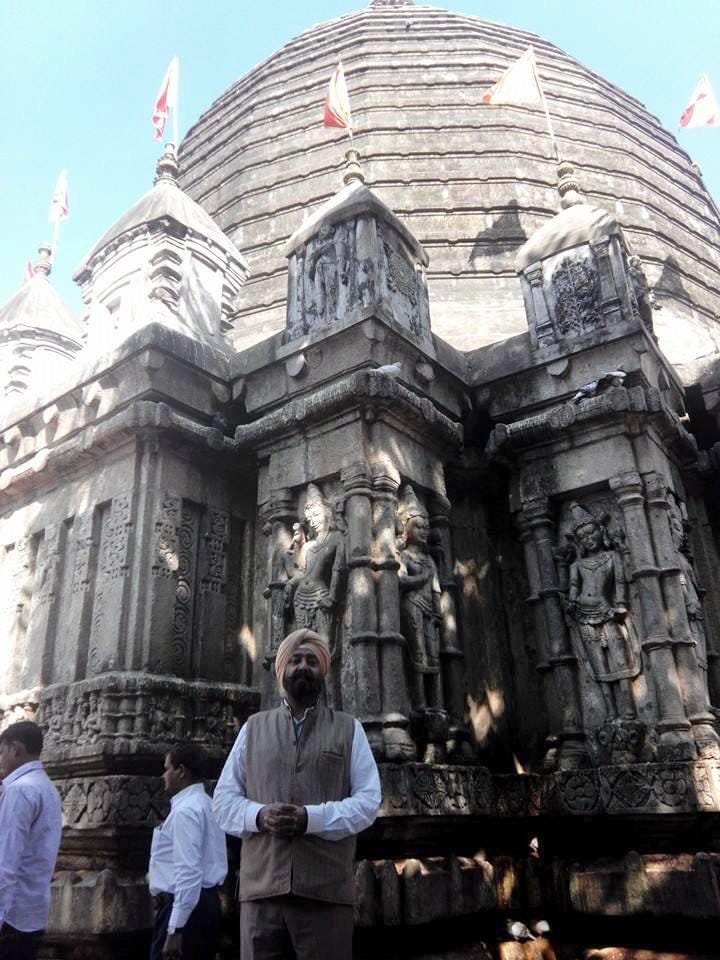
The Timeless Universal Significance of Navratras and Goddess Durga
The observance of Navratras and the veneration of Goddess Durga hold a significance that extends far beyond religious devotion, speaking to universal truths that resonate across human experience. While the festival is often associated with women's empowerment, its deeper implications offer a broader message for all of humanity. Navratras serve as an annual reminder that feminine energy is not confined to roles of nurturing and motherhood but is also a potent force of courage, wisdom, and justice. By worshipping the nine distinct forms of Goddess Durga, the festival highlights the complexity and multifaceted nature of feminine energy, emphasising its role in maintaining cosmic balance and order.
Embracing Feminine Power: A Contemporary Relevance of Navratras
In a world rife with adversity and complexities, the lessons emanating from Navratras take on profound significance. The festival extends beyond the bounds of mythology and faith to echo the enduring necessity of feminine divinity in safeguarding the moral and ethical backbone of humanity. While the Narendra Modi Government's women-centric initiatives and “Nari Shakti” programmes, along with the long-awaited passage of the Women's Reservation Bill, deserve commendation, we need to remember that these modern efforts serve to supplement, rather than to supplant, the enduring wisdom of our ancient traditions.
Timeless Wisdom: The Legacy of Feminine Divinity in Indian Culture
As we applaud the contemporary strides in women's empowerment, it's crucial to remember that women in ancient Indian traditions were not merely respected but were considered founts of power and strength. The legend of Goddess Durga, who assumed a ferocious form to vanquish the evil Mahishasura, exemplifies this; she didn't just protect herself but shielded entire humanity and the divine realm. This Navratras, let us pay homage not only to Goddess Durga in all her nine forms but also recognise and honour the inherent Shakti within every woman.
Universal Lessons: Transcending Religious Boundaries
This festival is an occasion for us to extend our reverence beyond the nine divine forms of Durga, acknowledging the innate power (shakti) present within every woman. This holistic perspective not only enriches our understanding of the multi-layered significance of Navratras but also unifies us as a collective humanity. The 9-day festival urges us to embrace the feminine virtues of strength, compassion, and wisdom, virtues that are universally essential as we navigate the complexities of the modern world. These eternal truths transcend religious faiths, and resonate as a clarion call for global unity and peace.




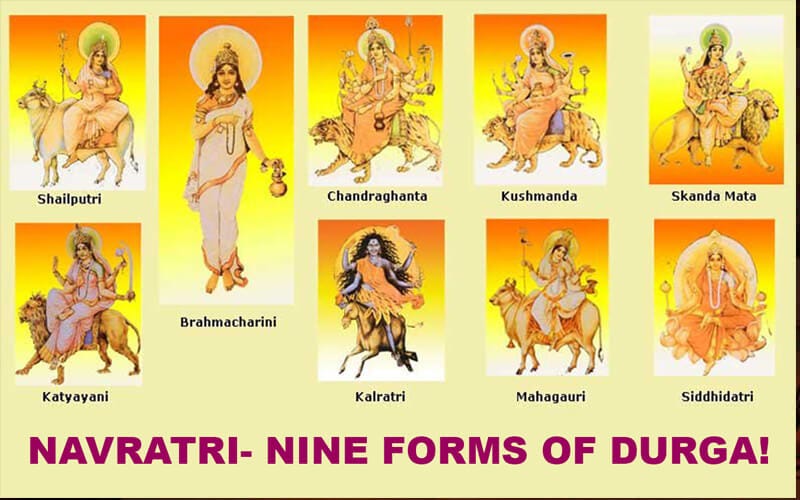
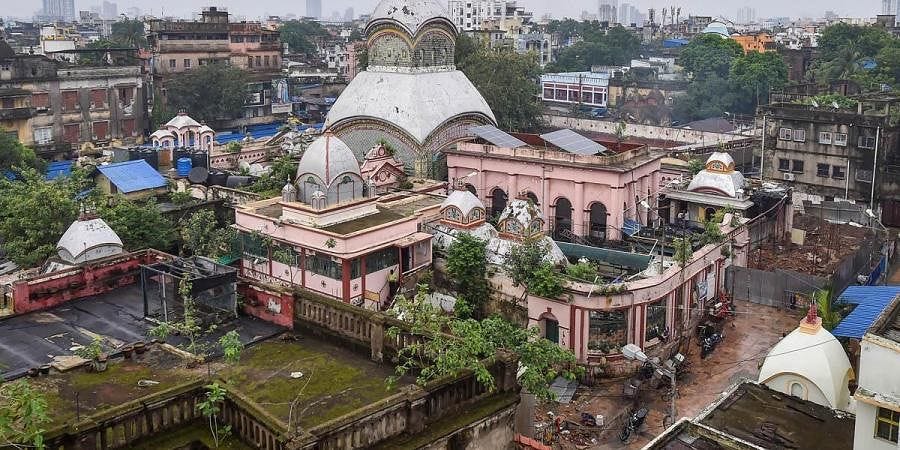
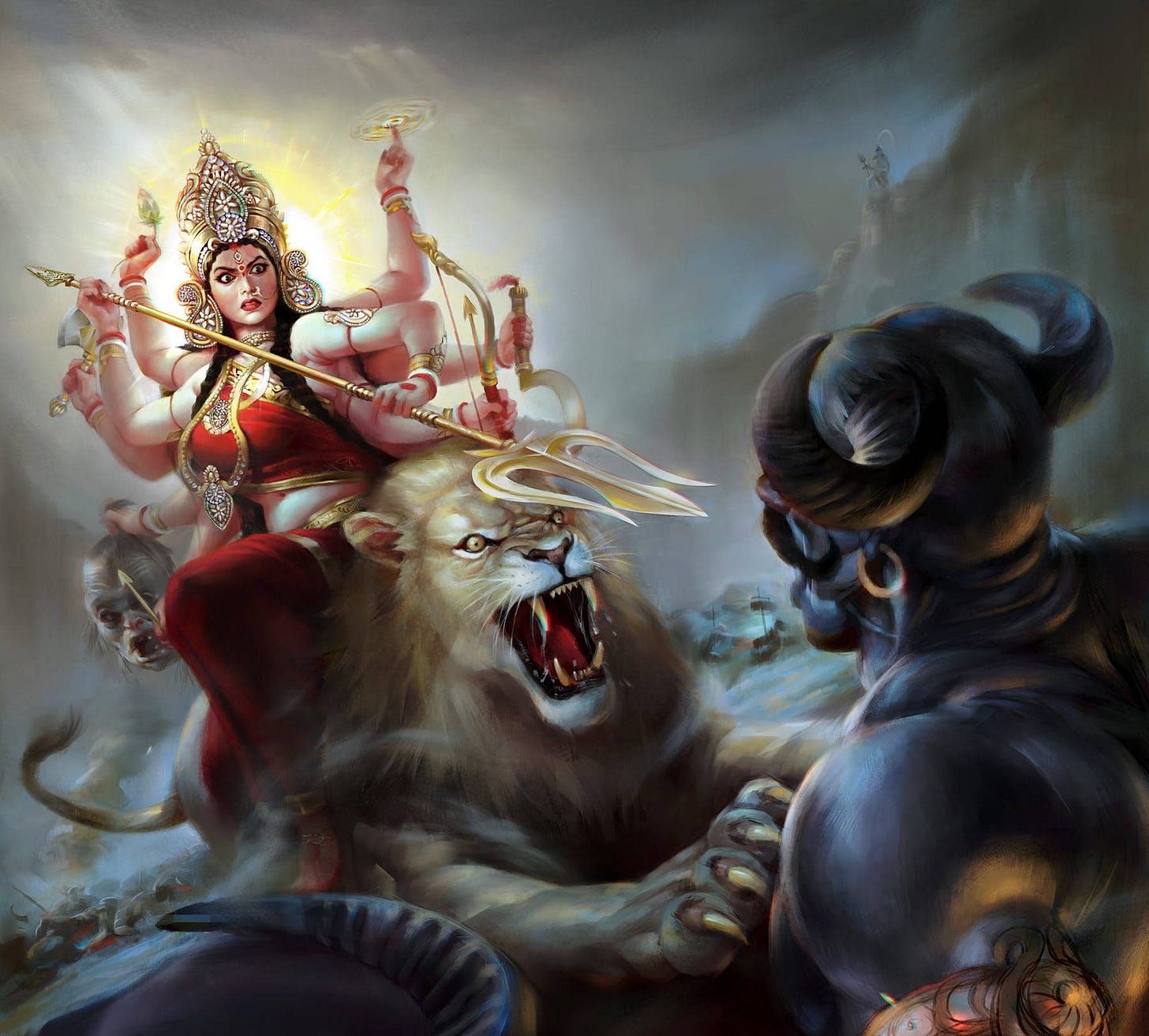
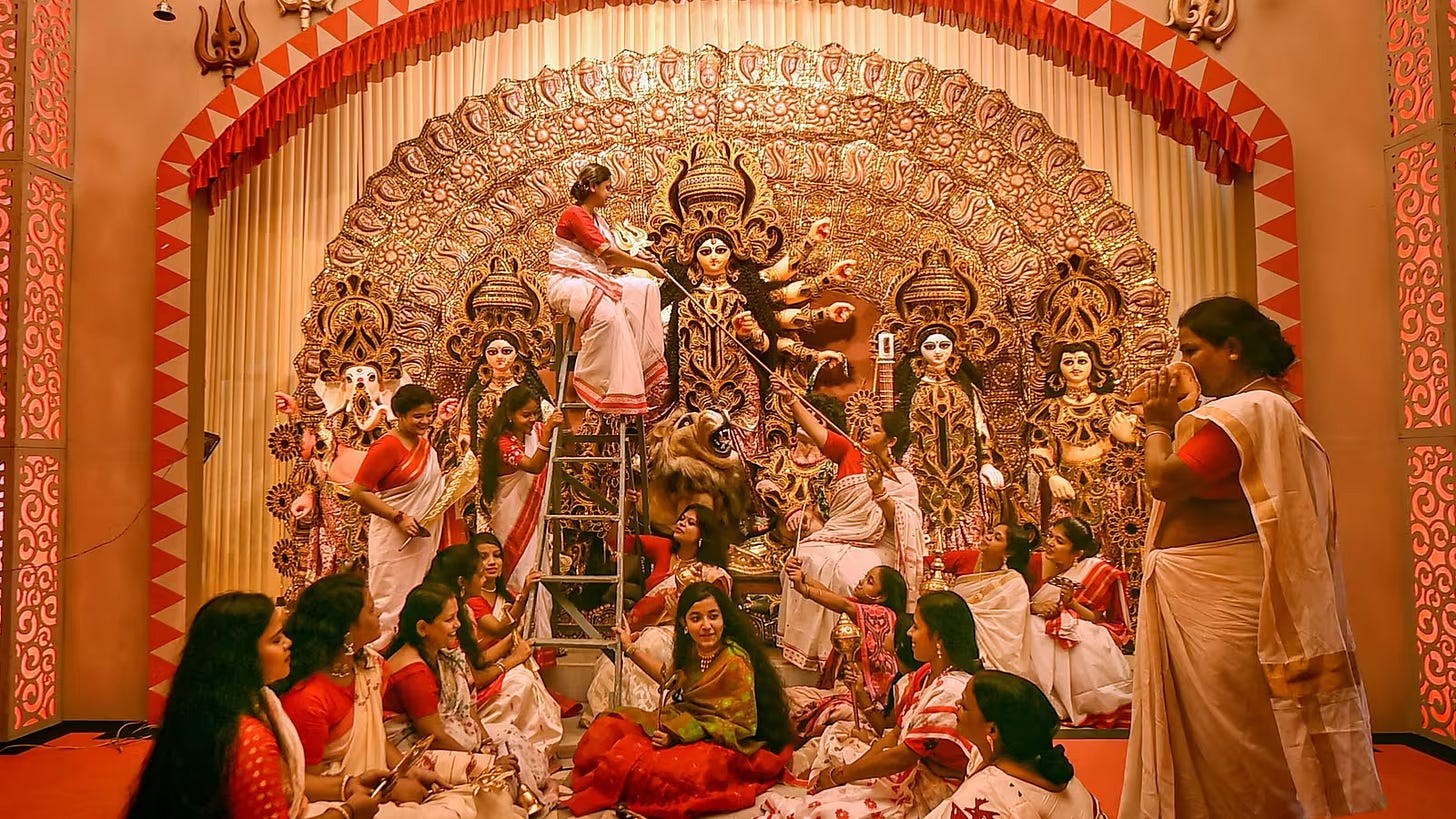
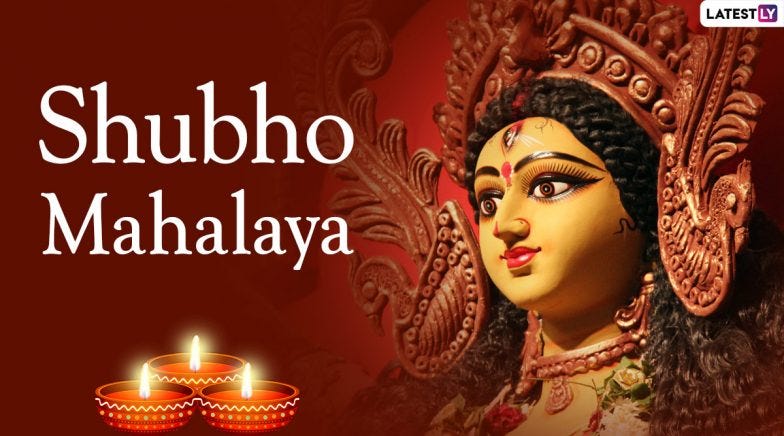

ਸ਼ਰਾਧ, ਨਵਰਾਤੇ,ਹੋਲੀ ਆਦਿਕ ਬਿਪਰ ਦੇ ਬਣਾਏ ਹੋਏ ਕਾਲਪਨਿਕ ਤਿਉਹਾਰ ਹਨ ਜਿਨ੍ਹਾਂ ਦਾ ਪੰਜਾਬ ਨਾਲ ਕੋਈ ਸਰੋਕਾਰ ਨਹੀਂ। ਕਿਹੜੀ ਦੇਵੀ ਜਾ ਦੇਵਤਾ ਪੰਜਾਬ ਵਿੱਚ ਪੈਦਾ ਹੋਇਆ ਜੀ ? ਅਸਲ ਵਿੱਚ ਪੰਜਾਬ ਦੇ ਲੋਕ ਕਿਸਾਨੀ ਕਰਦੇ ਸਨ ਅਤੇ ਲੱਗਭਗ ਅਨਪੜ੍ਹ ਸਨ। ਬਿਪਰ ਵਿਉਪਾਰੀ ਸੀ ਤੇ ਉਸ ਨੇ ਆਪਣਾ ਸਮਾਨ ਵੇਚਣ ਲਈ ਭੋਲੇ ਭਾਲੇ ਲੋਕਾਂ ਨੂੰ ਡਰਾ ਕੇ ਅਜਿਹੇ ਅੰਧਵਿਸ਼ਵਾਸ਼ੀ ਬਣਾਇਆ ਜਿਸਦਾ ਪ੍ਰਛਾਵਾਂ ਅਜੇ ਵੀ ਦਿਖਾਈ ਦੇ ਰਿਹਾ ਹੈ। ਪੰਜਾਬ ਅਤੇ ਵਿਸੇਸ਼ ਕਰਕੇ ਸਿੱਖਾਂ ਦਾ ਗੌਰਵਮਈ ਇਤਿਹਾਸ ਹੈ ਜਿਸ ਦੀਆਂ ਨਿਸ਼ਾਨੀਆਂ ਵੀ ਜਗਾ ਜਗਾ ਮੌਜੂਦ ਹਨ।
ਮਾਹ ਦਿਵਸ ਮੂਰਤ ਭਲੇ ਜਿਨ ਕਉ ਨਦਰਿ ਕਰੇ
ਨਾਨਕ ਮੰਗੈ ਦਰਸ ਦਾਨੁ ਕਿਰਪਾ ਕਰਹੁ ਹਰੇ